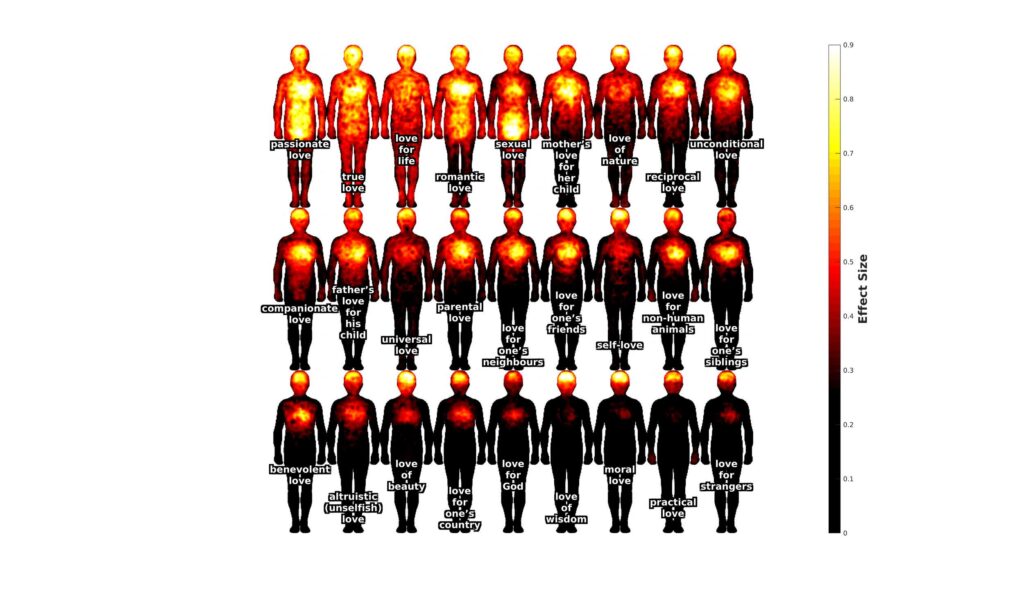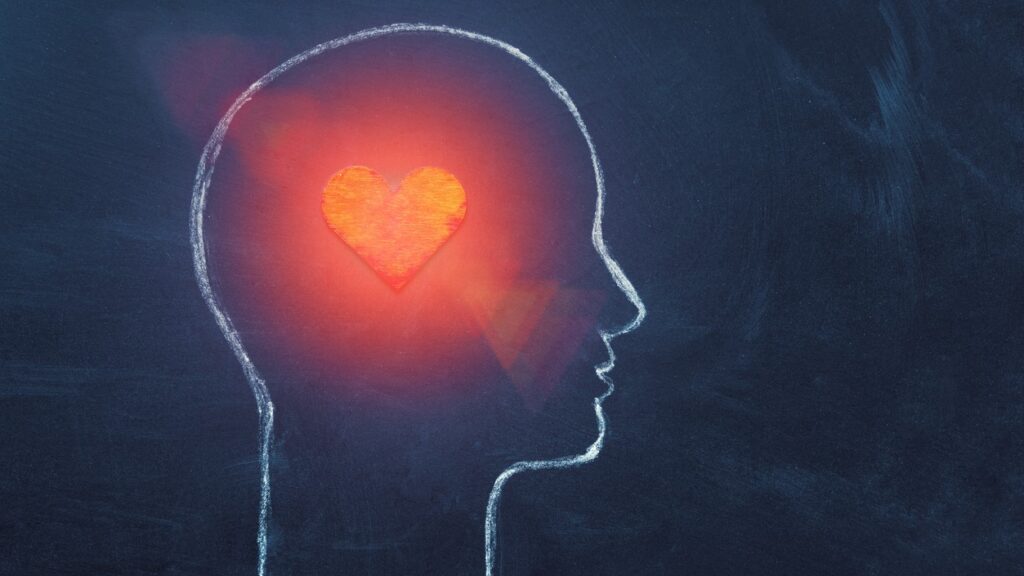Love comes in many forms—romantic love, parental love, love of art and beauty, to name just a few.
What has remained unexplored, until now, is how these different types of love are experienced physically.
The study “Body Maps of Love”, published in Philosophical Psychology, presents the first detailed mapping of how various loves are felt in the body. The findings advance the science of love by empirically revealing its complex manifestations.
Mapping love

In their quest to explore the physical sensations of love, researchers surveyed participants about 27 different types of love.
The goal was to identify where each type is felt in the body and how their experiences compare.
While not an exhaustive list, the 27 love types were chosen because they broadly cover the most common forms of love discussed in philosophical and religious traditions. They included romantic love, sexual love, parental love, and love for friends, strangers, nature, God, and oneself.
The study involved three experiments, mostly with Finnish women under 35 years old.
In the first experiment, 128 participants colored blank silhouettes to show where, and how intensely, they felt the different types of love in their bodies.
In the second experiment, 162 participants rated how strongly they felt each type of love in the body and mind. They also assessed their pleasantness and connection to physical touch.
In the third experiment, 249 participants arranged words representing love types, placing similar types closer together and different types further apart.
Feeling different types of love
Experiment 1: Body sensations

All types of love were strongly felt in the head. Most also involved chest sensations, which decreased in intensity with weaker love types.
The most strongly felt types of love—passionate love, true love, and love for life— were experienced throughout the body.
The most weakly felt types, such as love for strangers, moral love, and practical love, were mainly sensed in the head.
Experiment 2: Intensity, pleasantness, and touch

“The more strongly a type of love is felt in the body, the more strongly it’s felt in the mind and the more pleasant it is,” said study lead Pärttyli Rinne in an interview with Aalto University.
In fact, the physical and mental intensity of love types, their pleasantness, and touch associations were all highly positively correlated.
Participants reported the most positive feelings for sexual, romantic, reciprocal, true, and passionate love. More abstract love types, such as moral love and love for God, were rated the lowest.
Those related to sexuality—sexual, passionate, and romantic love—were felt most intensely in the body and had the strongest associations with touch.
Love for strangers, moral love, and practical love were the most weakly felt. They were also rated the least pleasant and least associated with physical touch.
Experiment 3: Grouping love types
The final experiment uncovered two main groups for love types:
- Interpersonal Love
- Love for Ideas and Nonhuman Animals
Interpersonal Love is love directed at other people. It includes love types linked to romantic relationships, such as romantic, sexual, and passionate love types that were grouped closely together. This category also encompasses non-sexual loves, such as parental love and love for one’s siblings, which were similarly grouped.
Love for Ideas and Nonhuman Animals includes feelings for non-human entities and abstract concepts.
The embodiment of love

Human experiences of love are boundless, yet they vary greatly in intensity and embodied experience.
“It was noteworthy, though not very surprising, that the types of love associated with close relationships are similar and are the most strongly experienced,” said Rinne.
Love types linked to biologically important contexts, such as romantic, sexual, and parental love, were felt more strongly than love for distant objects, such as strangers. The love types felt most widely across the body were also the most intense, both physically and mentally.
The study revealed that similar types of love, in terms of how pleasant and intense they felt in the body and mind, were experienced in similar areas of the body.
In addition, Rinne’s team found it fascinating that all different types of love are felt in the head.
“It may be that, for example, love for strangers or wisdom is associated with a cognitive process. It may also be that there are pleasant sensations in the head area. This is something that should be investigated further,” said Rinne.
The findings hint at a near-infinite spectrum of love, inviting us to explore the bodily complexities of this powerful emotion more deeply.
Featured image source: iStock



